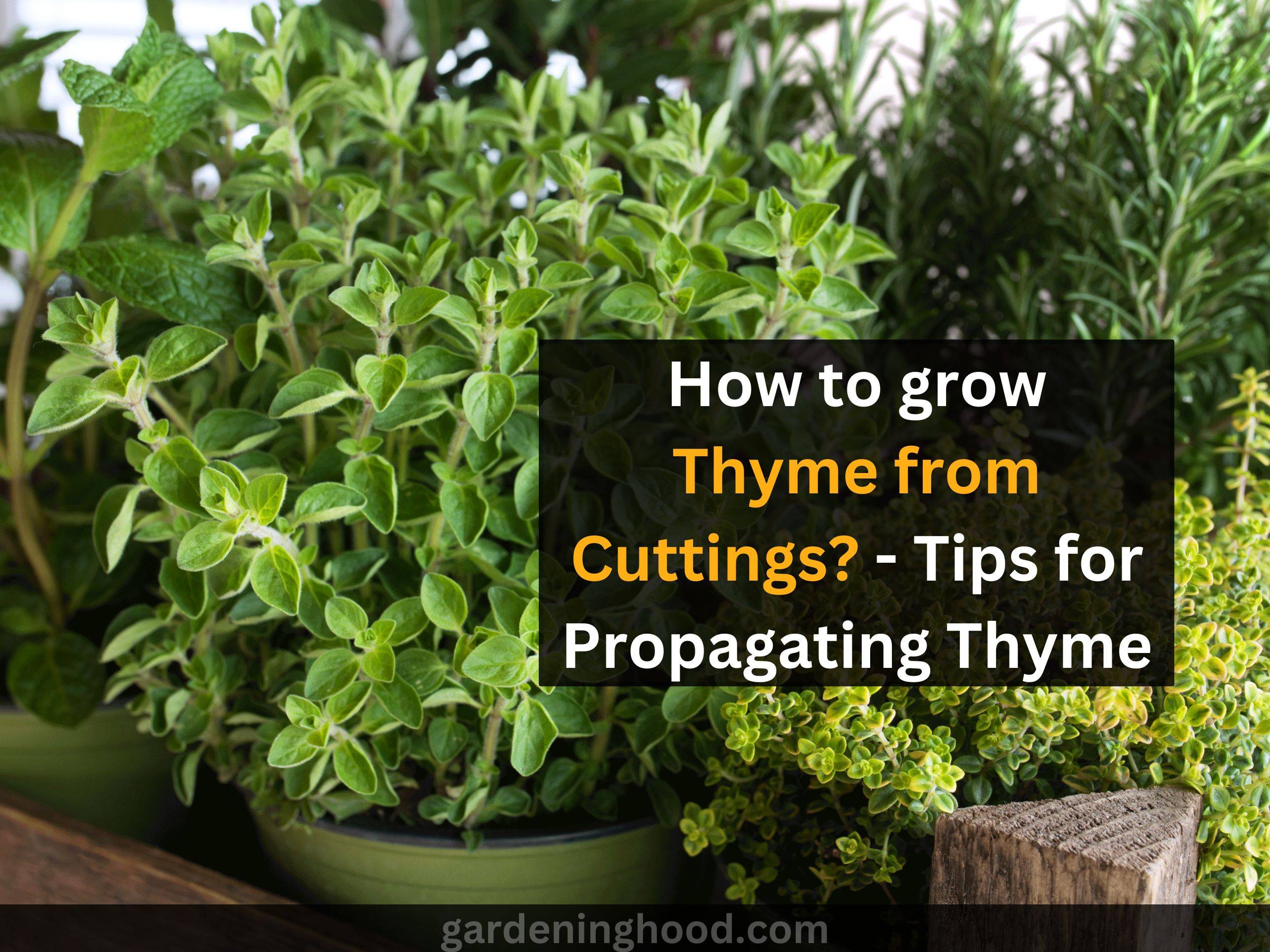A complete guide to watering Thyme plants – How often to water them?
This article brings you a complete guide to watering Thyme plants. Thyme is one of the popular herbs and is known for its savory flavor and fragrance. Gardeners love to grow thyme as they are harvested all the growing season and are eaten fresh as well as dried too. Are you a thyme lover, if yes, then you should know how to maintain the growth of the plant by feeding them water.
Quick takeaways:
- It is recommended to water thyme plants one to two times a week so that the plant grows well.
- Make sure to water thyme only when the plant soil is dry as wet soil will develop diseases in the plant.
- Do not overwater the thyme plant as it can ruin the plant’s growth.
- Growing thyme has benefits for the nearby plants in the garden as well. They are known to enhance the flavor of other fruits and vegetables as well.
- Thyme is a great companion plant for some species in your garden. For growing thyme, extra care needs to be given to them and you can grow them from cuttings.
A complete guide to watering Thyme plants
If you don’t know how to properly water thyme plants, then worry not! As we are here to provide you with a complete guide on watering thyme plants.
Thyme water requirements
Thyme is a Mediterranean herb and is a favorite of many Americans. Thyme is drought resistant and doesn’t want much water as compared to some other annual herbs.
Thyme needs to be given water after a gap of 1-2 weeks. They are quite hardy and even can survive frost quite well. Before watering, it is advised to check the top layer or one-inch topsoil layer, if it’s dry or not. They don’t like wet conditions too much-wet conditions.
A grown-up thyme plant doesn’t need water regularly. They are drought resistant and can withstand little water for a long time. You need to make sure that the soil is fully dry from the one-inch top layer and then go for watering thyme plant.
Thyme Seedling
If you have started from the stage of planting the seeds, and now the seedlings have appeared. You need to work wisely. The seedlings are in clusters, then extra water will be needed. By extra, we mean regular and light watering.
The same goes with the individual seedling, but make sure not to wet the seedling which can lead to rot of the seedling. In the early stages of growth, thyme needs a lot of moisture at different times of the day. This frequency of watering will be reduced later on.
You need to give them water regularly and make sure the pressure is light as the seedlings are tender. Sprinkle or spray some water on the seedling if the temperature is high and the plant looks too dry. The motive is not to let the seedling dry off.
Thyme if planted outside
Thyme plants need direct sunlight, and good space to thrive well and stay disease-free. Now when you have planted thyme outside, the sun is strong and sunlight might dry the thyme, you need to water it two to three times a week.
Many times, the thyme plant starts to wilt if the root system is not getting the water that it should get. That is another sign that you need to water your thyme plant. Soil if it feels dry, make it moist as soon as possible by watering and water should be drained well too.
Thyme if planted inside
The inside scenario is completely different from the outside having a thyme plant. The thyme plants don’t get easily thirsty while inside as the sunlight is not that strong and the moist drained soil is all they want. The soil needs to be dry first, whenever you water them, otherwise, it will be overwatered and become dull and soggy, wilted.
1. In pots
The thyme plants in pots need to be watered quite often due to the drainage of water in pots. The soil gets dry quickly and needs to be moisturized by spraying or watering a pot near the soil and making sure the leaves don’t stay wet for long which will rot them.
How to find out thyme is overwatered?
It is important to check whether thyme is overwatered. Thyme indicates being overwatered by drooping foliage or wilting. They often turn yellow when there is an excess amount in the soil or soggy.
In such cases, thyme should be planted in a good sunlight spot, so that they get at least 6-19 hours of light. If the days are rainy, avoid watering thyme plants completely.
How to find that thyme is underwatered?
Thymes can survive in dry soil for a long time. If they are underwater, being drought resistant they will still be able to grow. The leaves turn yellow when the thyme is kept thirsty for very long in the too-hot summers.
If the temperature is too high and the soil is kept dry, the plant will still droop and need to be watered to make the soil moist. Thyme needs moist but not too wet soil.
How to care for thyme?
Water thyme one time a week, when the thyme is grown up well and the weather is not very hot.
Thyme shows wilting in both underwatered and overwatered situations. It is important to check if the soil is too dry or soggy before watering. Good drainage is vital to keep thyme healthy.
You can Repot the thyme if the roots are getting much space to spread out. Thyme if clustered need much space to spread out.
Final thoughts on the context
Thyme is aromatic and we love to eat it. What better if you grow them and have access to fresh thyme anytime you want? Regarding watering thyme, we have covered every little detail in this article. We hope you find this helpful and get healthy well-watered thyme in your garden or pot. Happy planting!
FAQs
1. Can you overwater thyme?
Thyme is naturally drought resistant and doesn’t require much water but good moisture. Overwatering the thyme plants will cause the droopiness of leaves and also you will witness wilting if you water thyme excessively.
2. Why is the thyme plant drying up?
The water staying in the soil for a long time can invite fungal growth around the roots and cause root rot as well. This is due to the poor draining ability of soil. Soil should be light and porous and not clayey so that water can drain well. Avoid overwatering otherwise, thyme will die.
3. Will my thyme plant come back?
Thyme is perennial and yes they come back after a year and grow much bushy and spread well.
4. Why has my thyme gone woody?
Thyme gets hardy when they are not trimmed or have been old. Usually, they need to be replaced after every 2-3 years.


